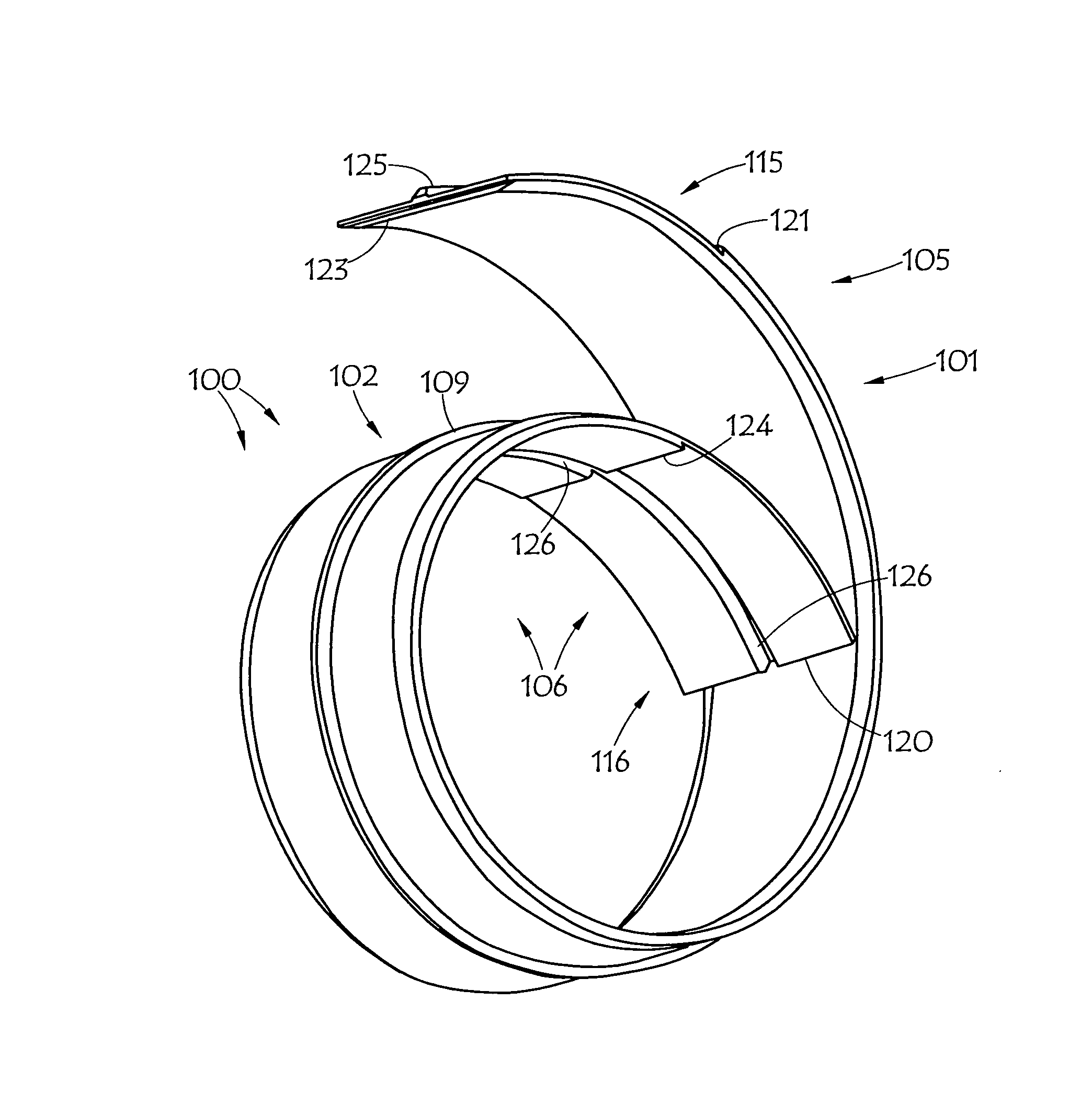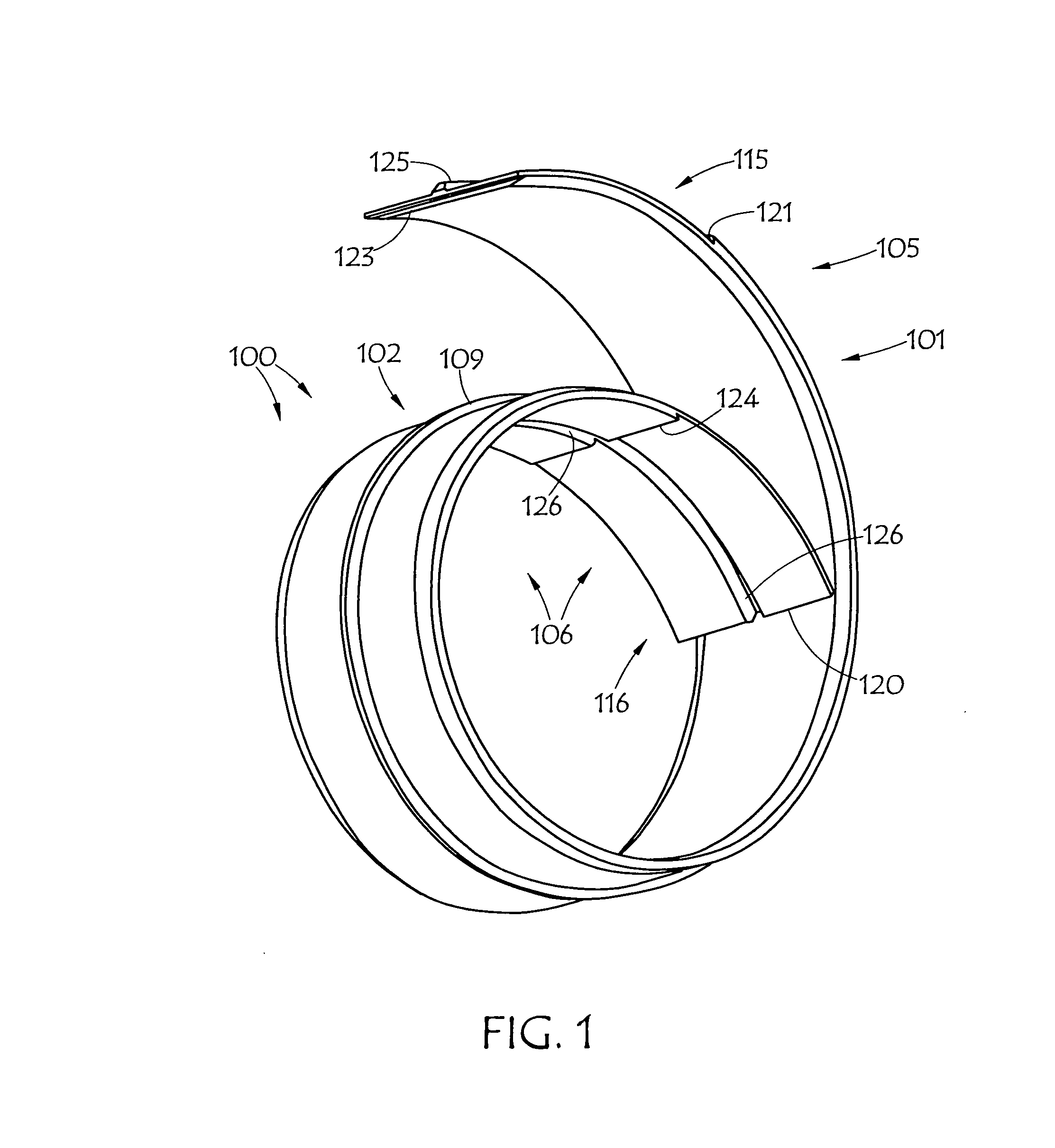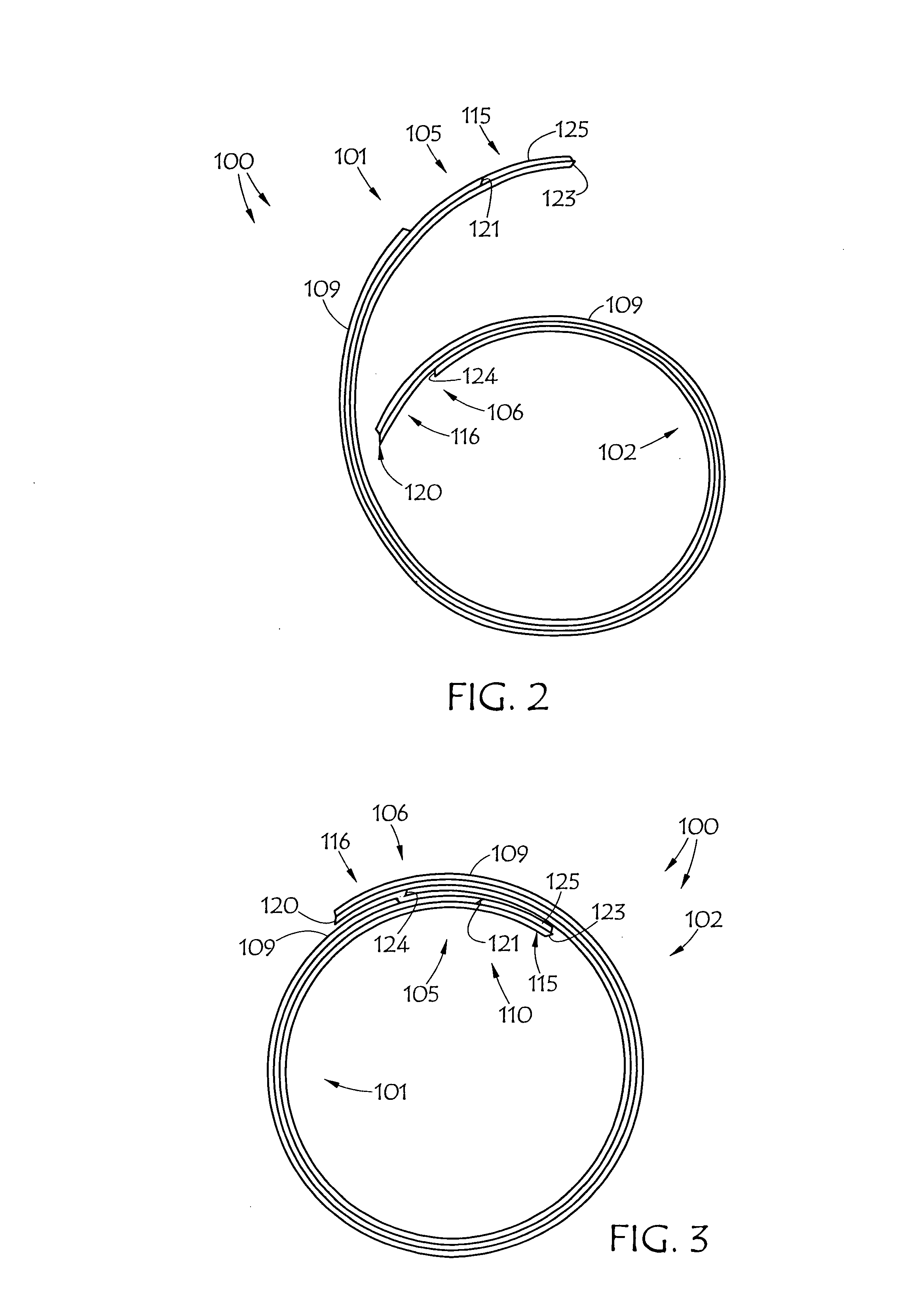Hose anti-collapse ribs, systems and methods
a technology of ribs and hoses, applied in the field of hoses, can solve the problems of engine control sensors, difficult installation, heavy, high cost, etc., and achieve the effects of low cost, minimal cross-sectional area, and less flow restriction
- Summary
- Abstract
- Description
- Claims
- Application Information
AI Technical Summary
Benefits of technology
Problems solved by technology
Method used
Image
Examples
Embodiment Construction
[0022]Embodiments of present hose anti-collapse rib 100 preferably employ a dual cantilever limb configuration, where the rib is molded in the approximate shape of two integral limbs one with a curvature greater than the other, deflected or curved in opposite, facing directions. This provides a non-circular, somewhat spiral, rib, such as illustrated in FIGS. 1 and 2, having the general shape of a “6” or a “9”. If first limb 101 is thereafter positioned under limb 102 the generally circular, spiral, collapsed ring configuration shown in FIG. 3 is obtained. Upon expansion of rib 100, the expanded and locked (more) circular shape shown in FIG. 4 is obtained.
[0023]In greater detail, the illustrated embodiment of an integral hose anti-collapse rib 100 might be a unitary body having a first cantilevered portion or limb 101. First limb 101 is preferably curved and defines a first end 105. A second cantilevered portion or limb 102 is preferably curved in a direction opposite the direction o...
PUM
| Property | Measurement | Unit |
|---|---|---|
| curvature | aaaaa | aaaaa |
| flexible | aaaaa | aaaaa |
| thickness | aaaaa | aaaaa |
Abstract
Description
Claims
Application Information
 Login to View More
Login to View More - R&D
- Intellectual Property
- Life Sciences
- Materials
- Tech Scout
- Unparalleled Data Quality
- Higher Quality Content
- 60% Fewer Hallucinations
Browse by: Latest US Patents, China's latest patents, Technical Efficacy Thesaurus, Application Domain, Technology Topic, Popular Technical Reports.
© 2025 PatSnap. All rights reserved.Legal|Privacy policy|Modern Slavery Act Transparency Statement|Sitemap|About US| Contact US: help@patsnap.com



